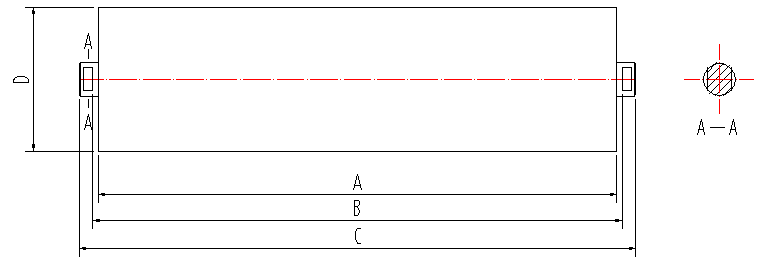 Afrikaans
Afrikaans  Albanian
Albanian  Amharic
Amharic  Arabic
Arabic  Armenian
Armenian  Azerbaijani
Azerbaijani  Basque
Basque  Belarusian
Belarusian  Bengali
Bengali  Bosnian
Bosnian  Bulgarian
Bulgarian  Catalan
Catalan  Cebuano
Cebuano  Corsican
Corsican  Croatian
Croatian  Czech
Czech  Danish
Danish  Dutch
Dutch  English
English  Esperanto
Esperanto  Estonian
Estonian  Finnish
Finnish  French
French  Frisian
Frisian  Galician
Galician  Georgian
Georgian  German
German  Greek
Greek  Gujarati
Gujarati  Haitian Creole
Haitian Creole  hausa
hausa  hawaiian
hawaiian  Hebrew
Hebrew  Hindi
Hindi  Miao
Miao  Hungarian
Hungarian  Icelandic
Icelandic  igbo
igbo  Indonesian
Indonesian  irish
irish  Italian
Italian  Japanese
Japanese  Javanese
Javanese  Kannada
Kannada  kazakh
kazakh  Khmer
Khmer  Rwandese
Rwandese  Korean
Korean  Kurdish
Kurdish  Kyrgyz
Kyrgyz  Lao
Lao  Latin
Latin  Latvian
Latvian  Lithuanian
Lithuanian  Luxembourgish
Luxembourgish  Macedonian
Macedonian  Malgashi
Malgashi  Malay
Malay  Malayalam
Malayalam  Maltese
Maltese  Maori
Maori  Marathi
Marathi  Mongolian
Mongolian  Myanmar
Myanmar  Nepali
Nepali  Norwegian
Norwegian  Norwegian
Norwegian  Occitan
Occitan  Pashto
Pashto  Persian
Persian  Polish
Polish  Portuguese
Portuguese  Punjabi
Punjabi  Romanian
Romanian  Russian
Russian  Samoan
Samoan  Scottish Gaelic
Scottish Gaelic  Serbian
Serbian  Sesotho
Sesotho  Shona
Shona  Sindhi
Sindhi  Sinhala
Sinhala  Slovak
Slovak  Slovenian
Slovenian  Somali
Somali  Spanish
Spanish  Sundanese
Sundanese  Swahili
Swahili  Swedish
Swedish  Tagalog
Tagalog  Tajik
Tajik  Tamil
Tamil  Tatar
Tatar  Telugu
Telugu  Thai
Thai  Turkish
Turkish  Turkmen
Turkmen  Ukrainian
Ukrainian  Urdu
Urdu  Uighur
Uighur  Uzbek
Uzbek  Vietnamese
Vietnamese  Welsh
Welsh  Bantu
Bantu  Yiddish
Yiddish  Yoruba
Yoruba  Zulu
Zulu Optimizing Conveyor Systems with Snub Pulleys for Improved Belt Performance and Efficiency
Understanding Snub Pulleys for Belt Conveyors
Belt conveyors are an essential component in various industries, facilitating the efficient transport of materials across different processes. A crucial element of these systems is the snub pulley, which plays a significant role in maintaining operational efficiency and reliability. In this article, we will explore the function, design, and benefits of snub pulleys in belt conveyors.
What is a Snub Pulley?
A snub pulley is a cylindrical component attached to a belt conveyor. It is primarily used to redirect the conveyor belt around a bend or change its direction. Positioned at various points along the conveyor system, snub pulleys are particularly effective in adjusting the tension of the belt and enhancing its tracking, which prevents misalignment and slippage.
Function of Snub Pulleys
1. Tension Adjustment One of the key functions of the snub pulley is to provide additional tension to the conveyor belt. This is critical as it ensures that the belt remains tight enough to prevent slippage over the drive pulley, which can lead to inefficiencies and potential breakdowns.
2. Belt Tracking Proper tracking of the conveyor belt is essential for smooth operation. Snub pulleys help realign the belt when it begins to drift, ensuring that it runs straight along the conveyor path. This minimizes wear on the belt and reduces the risk of damage to both the conveyor and the materials being transported.
3. Support for the Belt Snub pulleys provide support and stability to the belt, especially at points where it changes direction or elevation. This is crucial in preventing sagging and maintaining the integrity of the belt over time.
Design Considerations
snub pulley for belt conveyor

The design of snub pulleys is integral to their performance
. Key factors include- Material and Construction Snub pulleys are typically made from durable materials that can withstand the harsh conditions often found in industrial environments. Common materials include steel and reinforced plastics, which are selected based on factors such as load capacity and environmental exposure.
- Diameter and Size The diameter of the snub pulley affects the belt's tension and tracking capabilities. Larger pulleys can provide better belt support, while smaller pulleys may be more suitable in tight spaces. Therefore, the size of the pulley must be carefully determined based on the specific application and layout of the conveyor system.
- Mounting Orientation The position and orientation of the snub pulley impact its effectiveness. Pulleys must be installed correctly to ensure optimal performance, which often involves integrating them into the conveyor's overall design.
Benefits of Snub Pulleys in Belt Conveyors
1. Increased Efficiency By maintaining proper tension and tracking, snub pulleys enhance the overall efficiency of the conveyor system. This leads to smoother operations, fewer interruptions, and increased productivity.
2. Reduced Maintenance Costs With improved belt alignment and reduced wear, the need for frequent maintenance is decreased. This not only saves costs but also extends the lifespan of both the conveyor belt and other associated components.
3. Enhanced Safety Properly functioning snub pulleys help prevent issues that could lead to accidents, such as belt slippage or misalignment. Maintaining a safe operational environment is paramount in industrial settings.
In conclusion, snub pulleys are vital components in belt conveyor systems, contributing to their efficiency, safety, and longevity. By ensuring proper tension and tracking, these pulleys enhance operational effectiveness while reducing maintenance needs. For industries relying on conveyor systems, investing in quality snub pulleys is essential for achieving optimal performance and reliability. Understanding and properly implementing these components is key to maintaining a smooth and efficient material handling process.
-
Revolutionizing Conveyor Reliability with Advanced Rubber Lagging PulleysNewsJul.22,2025
-
Powering Precision and Durability with Expert Manufacturers of Conveyor ComponentsNewsJul.22,2025
-
Optimizing Conveyor Systems with Advanced Conveyor AccessoriesNewsJul.22,2025
-
Maximize Conveyor Efficiency with Quality Conveyor Idler PulleysNewsJul.22,2025
-
Future-Proof Your Conveyor System with High-Performance Polyurethane RollerNewsJul.22,2025
-
Driving Efficiency Forward with Quality Idlers and RollersNewsJul.22,2025





























